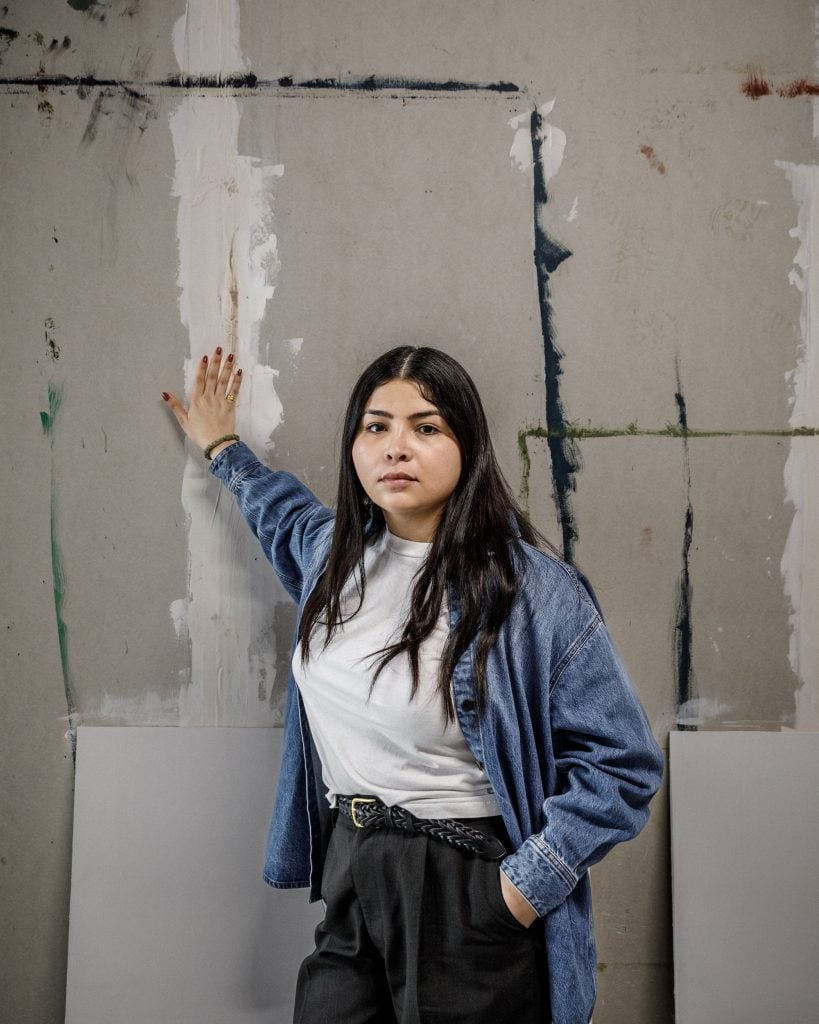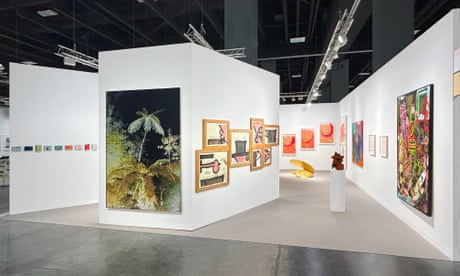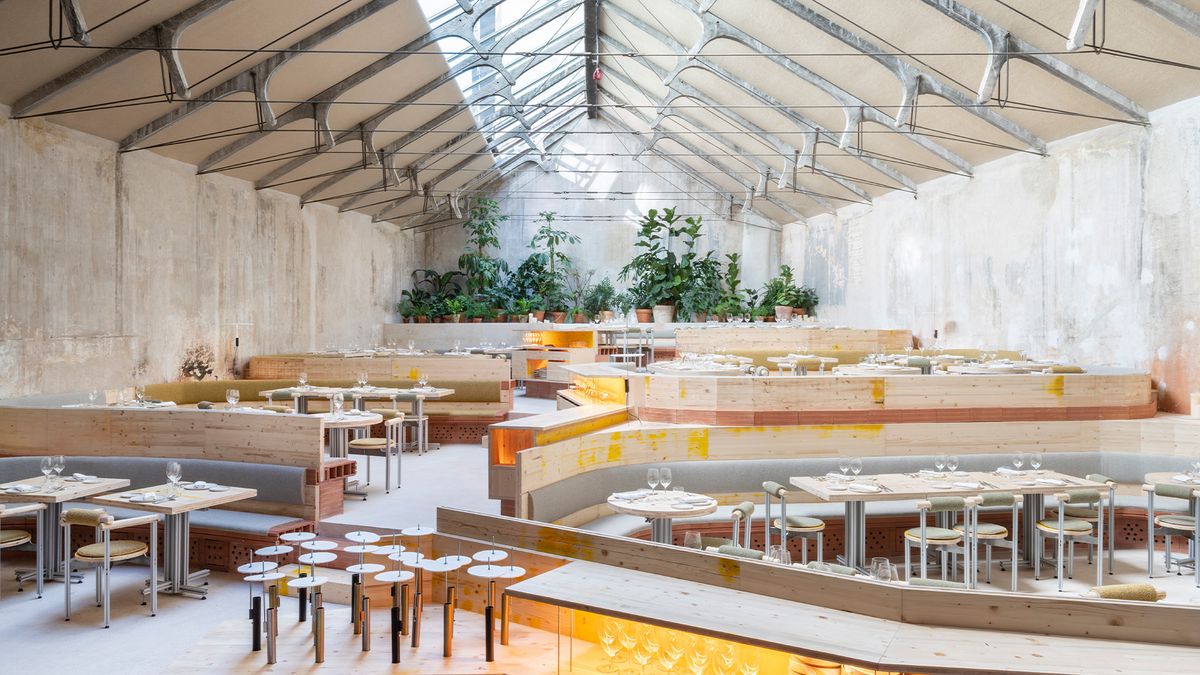The Lion’s Hunt
2019 - Painting (Painting)
370 x 240 cm
Matthew Lutz-Kinoy
The Lion’s Hunt by Matthew Lutz-Kinoy is a large format painting that recalls Delacroix’s paintings and tapestries from the 19th century, where the painterly surface became a garden invaded by wild beasts. In Lutz-Kinoy’s painting, two ferocious lions appear to be preying on several horses. Accentuated by luminous browns and yellows, the lions evoke imperialist fantasies. The horses are segmented into mirage-like fragments. The heads and the legs are recognized, but the artist uses bright whites and the positive and negative space of his stencil technique to show their lack of expression, as they seem to be losing the battle. By creating theatrical scenarios that mix figurative elements with mythological characters and narratives, Lutz-Kinoy works pay homage to the histories, traditions, and techniques of representation while exploring identity, gender, visibility, and pleasure.
Matthew Lutz-Kinoy has a multifaceted practice, vacillating from painting to poetry, theater performance to ceramics. He is best known for his large-scale paintings often installed like decorative tapestries on walls or suspended from the ceiling, which physically immerse viewers. Performance-based production is an essential element of Lutz-Kinoy’s practice. The artist is deeply influenced by histories of collaborative and queer practice, as well as studying dance, which has helped him to better understand how people maneuver their bodies as they move in specific spaces. Lutz-Kinoy’s research-based performances manifest as dance productions, traveling dinner parties, and programmed events within his exhibitions. He often collaborates with other artists to explore new horizons : Tobias Madison, James English Leary, Natsuko Uchino or Chelsea Culp.
Colors:
Related works sharing similar palette

© » KADIST
Leslie Shows
Human Quarry is a large work on paper by Leslie Shows made of a combination of acrylic paint and collage...

© » KADIST
Christopher Badger
2011Drowned Wood Standing Coiled (2011) consists of two sculptures, inextricably linked...

© » KADIST
Diego Marcon
2017Monelle by Diego Marcon was filmed at night inside the infamous Casa del Fascio, the headquarters of the local Fascist Party in Como Italy, designed by Giuseppe Terragni under Mussolini’s rule...

© » KADIST
Asli Çavusoglu
2020In the exhibition Pink as a Cabbage / Green as an Onion / Blue as an Orange , Asli Çavusoglu pursues her work on color to delve into an investigation into alternative agricultural systems and natural dyes made with fruits, vegetables, and plants cultivated by the farming initiatives she has been in touch with...

© » KADIST
José Castrellón
2016Palo Enceba’o is a project by José Castrellón composed of three photographs, two drawings on metal, and a video work that creates a visual and cultural analogy between the events of January 9th, 1964 in Panama City and the game of palo encebado carried out in certain parts of Panama to celebrate the (US-backed) independence from Colombia...

© » LENS CULTURE
Another America — AI-Generated Photos from the 1940s and 50s - AI-generated images by Phillip Toledano | Interview by Jim Casper | LensCulture Interview Another America — AI-Generated Photos from the 1940s and 50s Phil Toledano has often pushed the boundaries of photography to imagine the future; now he’s tapping into AI to create alternative histories, challenging our belief in any images at all...

© » KADIST
Aurélien Froment
2008dbqp is a photographic series in which the artist handles an enlargement of the plate with three cutout windows which was used for L’Archipel (The Archipelago) in collaboration with Pierre Leguillon...

© » KADIST
Fernanda Gomes
2013For this floor based work, Gomes has taken two lengths of bamboo and tied them together using linen thread...

© » KADIST
Saturday, March 3 3pm to 4.30pm Exhibition Walkthrough of If These Stones Could Sing and Falling Wall , performance by Public Movement Curator Marie Martraire will lead a walkthrough of If These Stones Could Sing , a group show on view which focuses on the body as a site to engage the politics of public monuments...











